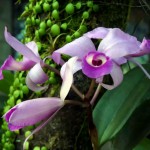National Park of Guanacaste
Biological Reserve, Lomas Barbudal
Biological Reserve Lomas Barbudal is located in Bagaces San Ramon, 15 km southwest of the city of Bagaces, province of Guanacaste.
Its creation as a national reserve by Executive Order NO. 16849-MAG of 23 January 1986. It has an area of 2.279 hectares.
This reserve protects a dry tropical forest rich in species of insects, particularly bees, wasps and butterflies and moths.
It is estimated that there are about 250 species of bees and 60 moths.
Another feature that makes Lomas Barbudal important wilderness area is the presence even during the summer of abundant water sources, such as Cabuyo River, numerous creeks and natural springs.
Lamas Barbudal Forest
Barbudal has several plant associations such as the savanna woodland, evergreen forest, riparian forest which is located next to streams and tropical dry forest, the latter being the most extensive.
In the deciduous forest most of the trees lose their leaves during the dry season. The most common species here are the kapok tree, the naked Indian, jobo, the yellow rind, rum, rum, bay leaf, bobbin and malacahuite mule.
Riparian forests are found along rivers and streams.
They are evergreen, dense and rich in variety and especially solitary bees.
The espavel, the gaupinol, the medlar, cinnamon, ojoche yellow and Cocora, are common species Jan this forest.
The savanna is an open area covered with grass and scattered trees with species of wood or raspaguacal chumico and night.
There are hills Barbudal timber species such as rum, rum, pochote, cristobal, mahogany and cocobolo that are endangered in the country eresot.
Many of these trees, shrubs and numerous other smaller plants on producing excellent fruit, nectar and pollen oils for birds, and insects such as mamífereos domestic and wild bees. There are about 250 species of bees in Lomas Barbudal.
These species are of the very important area of entomology, because many of them are unique in the country and are in a high number concentration and diversity in a relatively small area such as the wooded savannah.
Mammals are less abundant. However, you can see white-tailed deer, howler and white-faced momos, raccoons coatis, peccaries, squirrels and jaguarundis among others. There is also a large number of reptiles and fish.
As for the birds in this area have observed about 130 espeices, the most features the peacocks, the yellow-cockaded loreas, the king of vultures, toucan or black Curre

